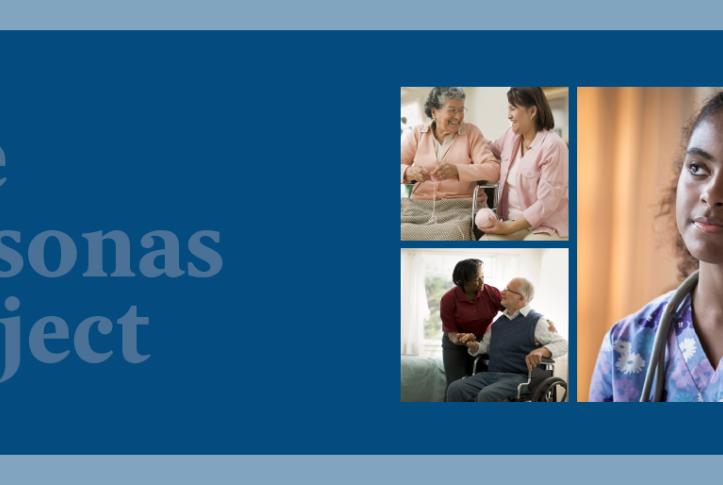Patient Segment: Caregivers
Patients with high needs often rely heavily on paid and unpaid caregivers, who share a different set of challenges. Unpaid caregivers include partners, children, friends, other family members. Paid caregivers include registered nurses, licensed practice nurses, social workers, and aides employed in nursing homes, residential care, home health, and hospice organizations.
Personas
Non-coping Nora: Nora feels the weight of the world on her shoulders. She worries about the worsening condition of her loved one and grieves their ultimate passing. She feels frustrated at the number of things that are beyond her control. Nora struggles to balance caregiving with the rest of her life and copes by staying busy to avoid thinking too much.
Supported Sofia: Even though it’s taxing, Sofia feels grateful to be there for her loved one during this difficult chapter. She strives to carry out her family member’s wishes and provide the best care she can, but also works to maintain her own health, sometimes using other, nearby relatives for a break in caregiving work.
Newbie Neal: Neal wants to form positive connections with his colleagues and clients, and get up to speed as quickly as possible. However, he is is stymied by inadequate training, lack of documentation of client’s care preferences, a hierarchical culture that discourages asking questions, and the pressure to keep many people happy while handling unfamiliar and difficult situations.
Caregiver-at-Heart Carina: Carina finds it deeply rewarding to care for those in need but struggles not to become too emotionally involved. She works in close collaboration with clients’ friends and family members to coordinate care and ensure comfort. Navigating boundaries and dynamics with family members is challenging for her.
Drained Darla: Darla's experience and competence can feel like a liability because they result in requests for help from other aides. Her workload feels overwhelming and she struggles to ensure her clients get what they need. In addition, the physical demands of her work leave her exhausted and sometimes resentful that she is paid so little for her efforts.
High-Need Patients and the “Personas” Project
For patients with high needs — because of multiple chronic conditions, a limited ability to perform tasks like bathing or dressing, or other disabilities or conditions — health care can be challenging as well as extremely costly. Patients often report that their needs for care are unmet and that they don’t communicate adequately with their providers. A Commonwealth Fund project interviewed dozens of patients to explore their experiences and how their struggles to find support has affected their lives and those of family caregivers. As part of this research, we developed “personas” for different segments of the high-need patient population, including the caregivers attend to them. A persona is a tool that helps depict the experiences, motivations, and goals of a specific population – as well as the barriers they face. It helps to put a human face and voice on a patient population that is all too often seen only through a lens of clinical or cost data. Personas can help identify gaps in care or processes and can aid health systems in addressing these flaws.
